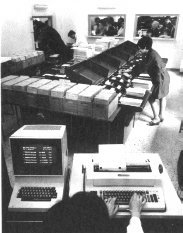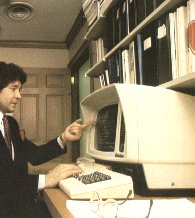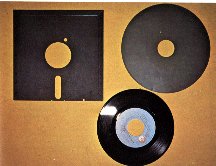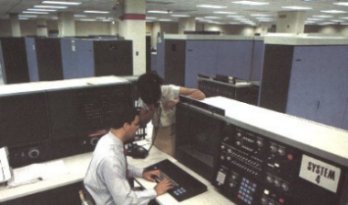|
The evolution in the seventies
In the scientific Institutes, in the Firms and in the public administrations, the calculation machines are seen almost as common use work instruments.
Thanks to the new techniques more microscopic and speeder circuits arise and the peripherical units are improved; through them there is a connection with the machine.
It is used readers of 1000 cards per minute, printing-machines of 2500 lines per minute and it is increased the magnetic disks capacity, allowing to store a lot of billiards letters and increasing a lot of the elaboration speed.
A first generation valve calculation machine could execute about 2200 multiplication per second.
Through the transistors, a second generation machine reached 38.000 multiplication per second, in 1970 an integrate circuit calculation machine was able to execute two million multiplication in one second.
The integrate circuits technology is exented also to the control units and to the main memory.
The informations aren't anymore set on the ferrite rings, but on the electronic circuits presence or absence electric current shaped.
So the necessary space for the central memory is reduced, it is increased the read and write speed of the memory and it is increased the global reliable of the machine.
It is created a technique known as "virtual memory", thanks to it is possible to execute programs that have remarkable dimensions.
The various programs, that have been executed, are set on plates and they are divided in "pages", necessary for the execution of the program in that moment.
Through this technique the machine works as if it had a principal memory that is wider than the real one.
The first machine that worked through this technology was the IBM 370 System, it was provided by a central memory with more than three million letters.
The terminals goes through a big evolution too.
From the simpler terminals, that are able only to transmit and receive data, itpasses gradually to the so called "intelligent" and they are able to work automatically too, executing arithmetic and logic operations.
Through this terminals it is possible to check the data intake, to execute the simpler elaboration, to set and print the issues, transmitting them immediately or in the next times to the central calculation machine without any users intervention.
The informations, that have been introduced through the keyboard, are set on a little magnetic disk, like a sigle disk, and it replaces the punch cards: only one disk is able to set the data of 3000 cards.
|

















